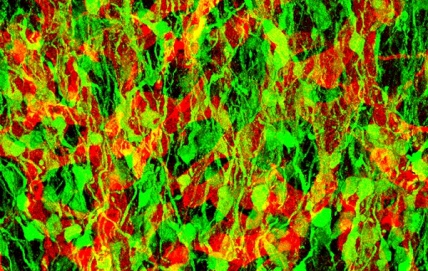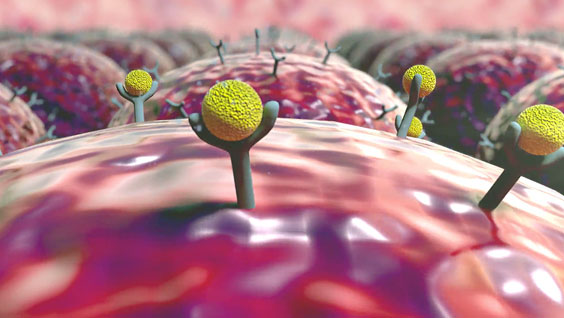At Sanford Burnham Prebys, we uncover the origins of disease and launch bold new strategies that lay the foundation for achieving cures. This year our scientists made significant progress—revealing new insights into how we treat some of the deadliest cancers, address neurological disorders such as Parkinson’s and amyotrophic lateral sclerosis (ALS, or Lou Gehrig’s disease) and more.
Read on to learn more about our top 10 discoveries of the year. To receive more frequent updates on our discoveries, subscribe to our monthly newsletter at the bottom of this page.
- One-two punch drug combination offers hope for pancreatic cancer therapy. Ze’ev Ronai, PhD, identified a combination of two anti-cancer compounds that shrank pancreatic tumors in mice—supporting the immediate evaluation of the drugs in a clinical trial. The study was published in Nature Cell Biology.
- Targeted treatment shrinks deadly pediatric brain tumors. Robert Wechsler-Reya, PhD, reported that a targeted therapy that blocks a protein called LSD1 shrank tumors in mice with a form of pediatric brain cancer known as medulloblastoma. LSD1 inhibitors are currently under evaluation in clinical trials for other cancers, which could speed their potential path to children. The study was published in Nature Communications.
- Epigenetic change causes fruit fly babies to inherit diet-induced heart disease. Rolf Bodmer, PhD, showed that reversing an epigenetic modification or over-expressing two genes protected fruit fly children and grandchildren from the negative heart effects of their parents’ fatty diet. These findings help explain how obesity-related heart failure is inherited and uncover potential targets for treatment. The study was published in Nature Communications.
- Amyotrophic lateral sclerosis (ALS) research reveals new treatment approach. Huaxi Xu, PhD, extended the survival of mice with ALS-like symptoms by elevating levels of a protein called membralin using a gene therapy approach. The study was published in the Journal of Clinical Investigations.
- How prostate cancer becomes treatment resistant. Jorge Moscat, PhD, and Maria Diaz-Meco, PhD, identified how prostate cancer transforms into an aggressive, treatment-resistant subtype called neuroendocrine prostate cancer (NEPC) following treatment with anti-androgen therapy. Their findings uncover new therapeutic avenues that could prevent this transformation from occurring and reveal that an FDA-approved drug holds promise as an NEPC treatment. The study was published in Cancer Cell.
- Boosting muscle stem cells to treat muscular dystrophy and aging muscles. Alessandra Sacco, PhD, uncovered a molecular signaling pathway that regulates how muscle stem cells decide whether to self-renew or differentiate—an insight that could lead to muscle-boosting therapeutics for muscular dystrophies or age-related muscle decline. The study was published in Nature Communications.
- Functional hair follicles grown from stem cells. Alexey Terskikh, PhD, created natural-looking hair that grows through the skin using human induced pluripotent stem cells (iPSCs), a major scientific achievement that could revolutionize the hair growth industry. Stemson Therapeutics has licensed the technology.
- Potential targeted treatment for acute myeloid leukemia identified. Ani Deshpande, PhD, showed that a protein called BMI1 is a promising drug target for an AML subtype in which two normally separate genes fuse together. The findings, published in Experimental Hematology, provide a rationale for evaluating a BMl1-inhibiting drug that is currently in clinical development as a potential treatment for this subtype.
- Antimicrobial protein implicated in Parkinson’s disease. An immune system protein that usually protects the body from pathogens is abnormally produced in the brain during Parkinson’s disease, Wanda Reynolds, PhD, reported in Free Radical Biology & Medicine. The discovery indicates that developing a drug that blocks this protein, called myeloperoxidase (MPO), may help people with Parkinson’s disease.
- Digestion-aiding herbs alter gut microbiome. Scott Peterson, PhD, found that four herbs—turmeric, ginger, long pepper and black pepper—promoted strong shifts in the gut bacteria that are known to regulate metabolism, providing insights that could help us protect our health. The study was published in Evidence-Based Complementary and Alternative Medicine.



